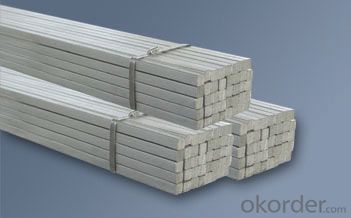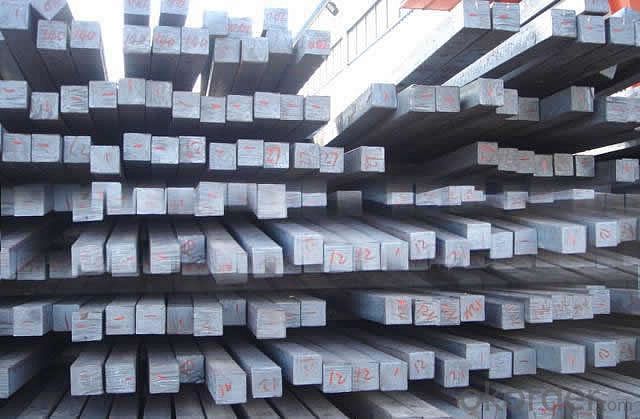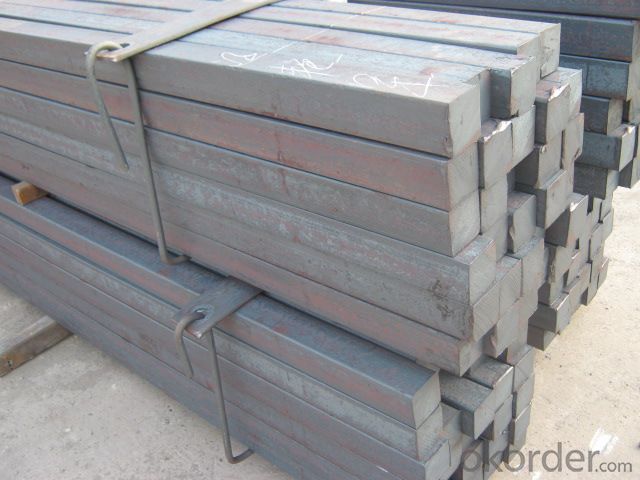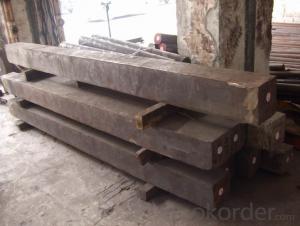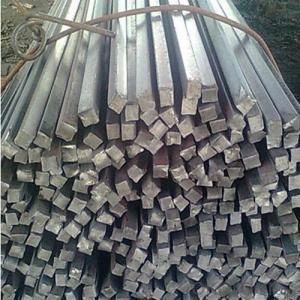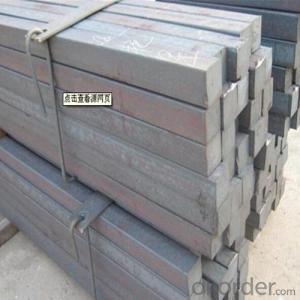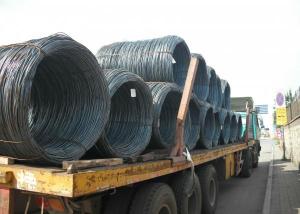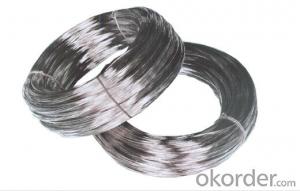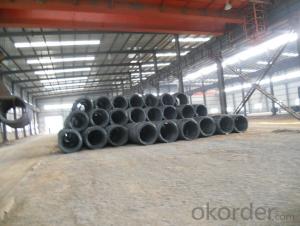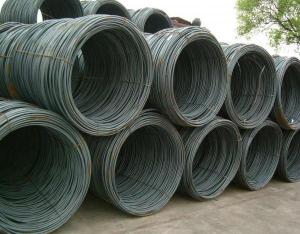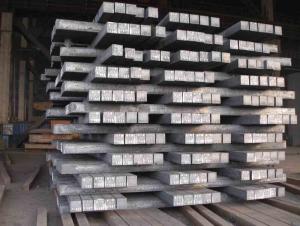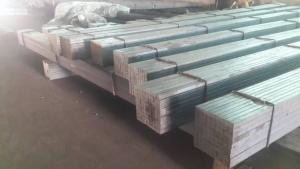14mm 12mm stainless steel wire rod wire rod
- Loading Port:
- Tianjin
- Payment Terms:
- TT or LC
- Min Order Qty:
- 25 m.t.
- Supply Capability:
- 10000 m.t./month
OKorder Service Pledge
OKorder Financial Service
You Might Also Like
Product Description:
OKorder is offering 14mm 12mm stainless steel wire rod wire rod at great prices with worldwide shipping. Our supplier is a world-class manufacturer of steel, with our products utilized the world over. OKorder annually supplies products to European, North American and Asian markets. We provide quotations within 24 hours of receiving an inquiry and guarantee competitive prices.
Product Applications:
14mm 12mm stainless steel wire rod wire rod are ideal for structural applications and are widely used in the construction of buildings and bridges, and the manufacturing, petrochemical, and transportation industries.
Product Advantages:
OKorder's 14mm 12mm stainless steel wire rod wire rod are durable, strong, and resist corrosion.
Main Product Features:
· Premium quality
· Prompt delivery & seaworthy packing (30 days after receiving deposit)
· Corrosion resistance
· Can be recycled and reused
· Mill test certification
· Professional Service
· Competitive pricing
Product Specifications:
square steel billet
1.3SP, 5SP
2.terms of payment: L/C at sight
3.size: 120*120mm
4.length: 5.8~12m
square steel billet
Specifications
square steel billets
1)We procure world class quality steel billets which meets the specific requirements of the clients
The Billets produced by the company can be broadly divided into three main types i.e.
M.S. Billets
CRS Billets
Special Alloy Billets
M.S. Billets are used for rolling of TMT Re-Bars of Fe415 and Fe500 Grade and various other structural steel products.
CRS Billets are used fro rolling of CRS TMT Re-Bars.
Special Alloy Billets are used for rolling of any special grade TMT Re-Bars like Earthquake resistant TMT Re-Bars and for special grade structural steel products.
The following are the sizes of Billets available with Shyam Steel Industries Ltd.:
100 X 100
120x120
150 X 150
Physical Properties:
Description
As per IS 2830
Shyam Billets
Bend (max.) 5 mm per meter >= 5 mm per meter
Carbon (max.) 3mm per meter >= 3 mm per meter
Length 3 mt - 13 mt 3 mt - 9 mt
Chemical Properties:
Ladle Analysis:
Designation
Carbon
Manganese
C15 0.12-0.18 0.30-0.60
C18 0.15-0.21 0.30-0.60
C20 0.17-0.23 0.30-0.60
C15 MMn 0.12-0.18 0.60-1.00
C18 MMn 0.15-0.21 0.60-1.00
C20 MMn 0.17-0.23 0.60-1.00
C15 HMn 0.12-0.18 1.00-1.50
C18 HMn 0.15-0.21 1.00-1.50
C20 HMn
0.17-0.23 1.00-1.50
Billets of different designations are manufactured in three different grades namely A, B, C having sulphur, phosphorous content (on ladle analysis) and carbon equivalent as follows:
Chemical Analysis:
Grade Sulphur Phosphorous Carbon Equivalent (CE)1
Max Max Max
A 0.05 0.05 0.42
B 0.045 0.045 0.41
C 0.04 0.04 0.39
FAQ:
Q1: How do we guarantee the quality of our products?
A1: We have established an advanced quality management system which conducts strict quality tests at every step, from raw materials to the final product. At the same time, we provide extensive follow-up service assurances as required.
Q2: What makes stainless steel stainless?
A2: Stainless steel must contain at least 10.5 % chromium. It is this element that reacts with the oxygen in the air to form a complex chrome-oxide surface layer that is invisible but strong enough to prevent further oxygen from "staining" (rusting) the surface. Higher levels of chromium and the addition of other alloying elements such as nickel and molybdenum enhance this surface layer and improve the corrosion resistance of the stainless material.
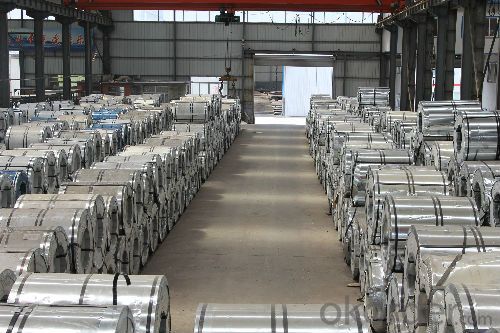
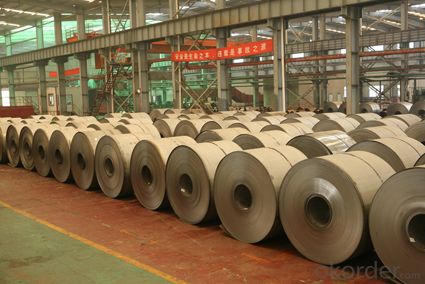

- Q: Can a steel square be used for setting up a scroll saw?
- Indeed, the setup of a scroll saw can involve the utilization of a steel square. A steel square possesses great versatility as a woodworking tool, serving multiple purposes, such as the establishment of a scroll saw. By implementing this tool, one can guarantee that the table of the scroll saw aligns flawlessly with the blade, resulting in meticulous and precise cuts. Simply position the steel square against both the blade and the table, enabling the adjustment of the table's angle until it achieves complete squareness. This technique will greatly aid in the attainment of straight and immaculate cuts when operating the scroll saw.
- Q: Can a steel square be used for marking out tenons?
- Yes, a steel square can be used for marking out tenons. A steel square, also known as a framing square or carpenter's square, is a versatile tool commonly used in woodworking and carpentry for making precise measurements and marking out angles. When marking out tenons, which are the projecting ends of a piece of wood that fit into a mortise, a steel square can be used to ensure accurate and square cuts. By aligning the square against the edge of the wood and marking the lines along its straight edges, woodworkers can achieve precise and consistent tenons. The square's sturdy construction and straight edges make it an ideal tool for marking out tenons and other woodworking joints.
- Q: How do you use a steel square to check for squareness?
- To use a steel square to check for squareness, you can follow these steps: 1. Place the steel square against one edge of the object or surface you want to check for squareness. 2. Ensure that one arm of the square is touching the edge of the surface, while the other arm is pointing towards the interior of the object. 3. Take a careful look at the gap between the interior arm of the square and the adjacent edge of the object. 4. If the gap is consistent and parallel along the entire length of the square, then the object or surface is square. 5. However, if the gap widens or narrows along any part of the square, then the object or surface is not square and will require adjustment.
- Q: How do you use a steel square to measure and mark 258.75-degree angles?
- To use a steel square to measure and mark a 258.75-degree angle, you would align the long side of the square with the reference line or edge. Next, locate the degree markings on the square's blade and place the square on the reference line accordingly. Look for the closest degree marking to 258.75 degrees and mark the angle using a pencil or any appropriate marking tool.
- Q: How do you use a steel square to find the length of a line?
- To use a steel square to find the length of a line, you can align one edge of the steel square with the starting point of the line. Then, carefully slide the square along the line until the opposite edge aligns with the endpoint. Finally, read the measurement marked on the steel square where the endpoint aligns, which will give you the length of the line.
- Q: How do you use a steel square to mark a line parallel to a board edge?
- To mark a line parallel to a board edge using a steel square, adhere to the following instructions: 1. Align one of the steel square's edges with the board's edge. 2. Securely hold the steel square in position, making sure it remains stable. 3. Position a pencil or marking tool against the steel square's opposite edge. 4. While maintaining contact between the pencil and the steel square's edge, cautiously glide it along the square's length. 5. As the pencil moves, it will leave a mark on the board, parallel to its edge. 6. Continue sliding the pencil until the desired length or distance on the board is marked. 7. After marking the line, verify its parallelism by measuring the same distance at various points along the line. Employ a tape measure or ruler for accurate verification. By utilizing a steel square and adhering to these instructions, you can effortlessly mark a line parallel to a board edge. This technique proves particularly beneficial in carpentry and woodworking projects where precision plays a crucial role.
- Q: Can a steel square be used for checking the levelness of a floor?
- Using a steel square to check the levelness of a floor is not possible. This tool is mainly employed in carpentry and woodworking to measure and mark right angles. It lacks the design and calibration needed to assess the horizontal surface of a floor. For this task, a more suitable tool would be a level, such as a spirit level or laser level. These tools are explicitly created to determine the levelness of a floor and provide precise readings of the horizontal plane. Additionally, they can assist in identifying any unevenness or slopes present in the floor.
- Q: How do you use a steel square to determine the angle of a coping cut?
- To determine the angle of a coping cut using a steel square, place the square against the edge of the material you want to cut. Align one arm of the square with the face of the material and the other arm with the edge. Then, read the angle measurement on the scale of the steel square, which indicates the angle of the coping cut.
- Q: What are the common misconceptions about using a steel square?
- One common misconception about using a steel square is that it is only used for measuring right angles. In reality, a steel square is a versatile tool that can be used for a variety of measurements and layout tasks, such as marking angles, checking for squareness, and determining pitch or slope. Additionally, another misconception is that a steel square is difficult to use or requires advanced knowledge. With some basic understanding and practice, anyone can effectively use a steel square for accurate measurements and layout work.
- Q: What is the weight of a typical steel square?
- The size and thickness of a typical steel square can cause its weight to vary. Nevertheless, as a rough approximation, a steel square measuring 12 inches on each side and having a thickness of 1 inch can weigh approximately 40 pounds. It should be emphasized that this weight may differ depending on the specific type and grade of steel employed.
Send your message to us
14mm 12mm stainless steel wire rod wire rod
- Loading Port:
- Tianjin
- Payment Terms:
- TT or LC
- Min Order Qty:
- 25 m.t.
- Supply Capability:
- 10000 m.t./month
OKorder Service Pledge
OKorder Financial Service
Similar products
Hot products
Hot Searches
Related keywords



